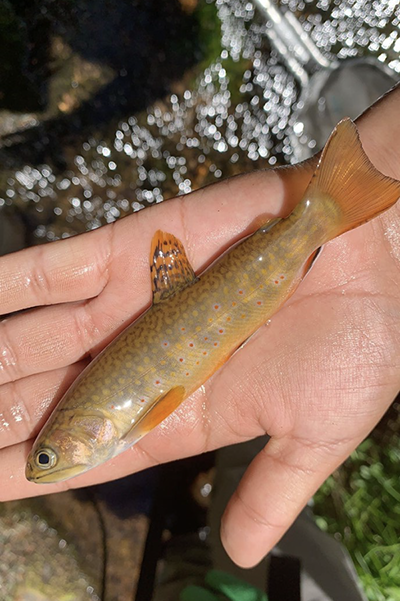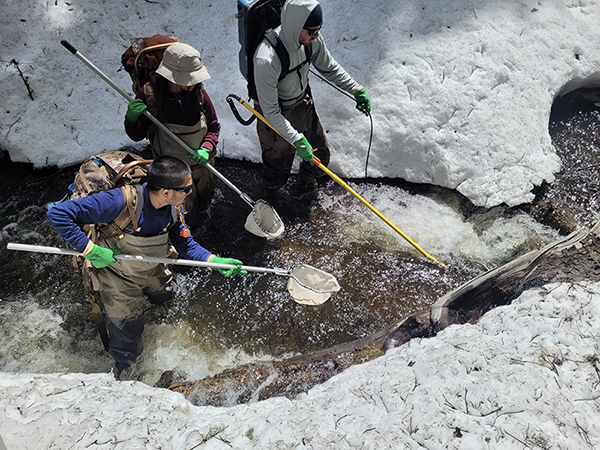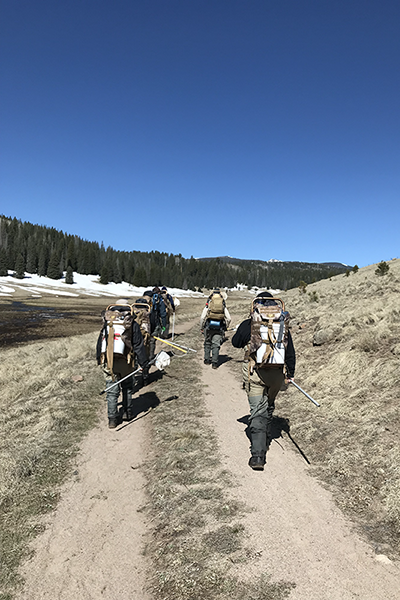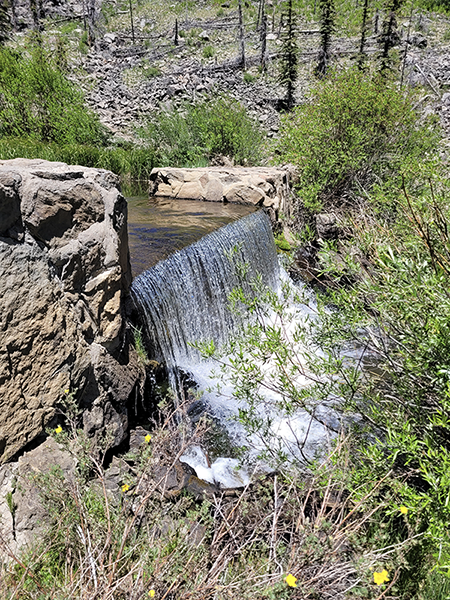Tribal members being hired thanks to Bipartisan Infrastructure Law funding
 An Myy brook trout is examined before being released into the West Fork Black River in 2023. 📸courtesy of USFWS
An Myy brook trout is examined before being released into the West Fork Black River in 2023. 📸courtesy of USFWS
ARIZONA – On the surface, stocking more of the invasive fish you are trying to remove might seem counterintuitive, but one innovative restoration project in Arizona is hopeful they can have success using that approach.
The addition of $350,000 from the Bureau of Reclamation’s Bipartisan Infrastructure Law in 2023 is supporting the effort to use male brook trout that only produce male offspring to eliminate the population from that stretch of the river.
In stretches of the West Fork Black River and Thompson Creek, in the White Mountains of east-central Arizona, efforts to remove invasive brook trout and bolster native Apache trout and loach minnow have been ongoing for several years. Apache trout are one of Arizona’s two native trout species and they are of cultural importance to the region’s indigenous peoples.
The streams flow through the San Carlos Apache and White Mountain Apache tribal lands and the additional Reclamation funds are being used to hire local tribal members to support the restoration effort.
“In 2021, crews resumed efforts to eradicate brook trout using electrofishing,” said Zach Jackson, project coordinator with the U.S. Fish and Wildlife Service. “Although this resulted in significant reductions in the brook trout population with over 8,000 fish removed, the remote terrain and abundance of breeding stock remaining meant we had to do even more if we were to be successful.”
Jackson said other removal methods were considered. “This is the first project in Arizona using the "super male” technique (created through the use of hormone treatments) to eradicate an invasive species,” he noted. “All previous projects involved chemical or mechanical (electrofishing or other capture and removal) techniques.”

In 2023, Jackson said, 4,000 male brook trout with two y chromosomes, instead of the normal “XY” chromosome, were loaded into plastic bags, then placed in five-gallon buckets and strapped to backpack frames for up to three-mile treks, on foot, to the release sites. Their adipose fins were removed before the Myy brook trout were released so that these fish can be identified and returned to the stream during subsequent electrofishing surveys instead of being removed like their natural counterparts.

This year, the Service has already assisted the White Mountain Apache Tribe Game and Fish Department in releasing 8,000 Myy fish in stream reaches occurring on tribal lands. Project partner Arizona Game and Fish Department is planning to release an additional 5,000 Myy brook trout in downstream areas of both streams.
“Over time, they will spawn with the wild female brook trout and all the progenies will be born male,” Jackson noted.
So far this year, the crew has removed an additional 1,600 wild brook trout and captured and returned 642 wild Apache trout and 1,326 of the Myy brook trout planted in 2023.
“If we conduct at least three electrofishing passes each year, we expect to remove about 70 percent of the wild, natural, brook trout population annually,” he explained. “When the last female is gone, the population will die off within the life cycle of the remaining males.”
He added that the first-ever Myy project was just deemed successful after just six years.
“That work was conducted in Idaho in a smaller system, but we think we might be successful in about the same timeline (2029) due to our complementary mechanical removal and higher stocking rates,” added Jackson.

To learn more about Reclamation investments using the Bipartisan Infrastructure Law, visit https://www.usbr.gov/bil/.
# # #
The Bureau of Reclamation is a federal agency under the U.S. Department of the Interior and is the nation's largest wholesale water supplier and second largest producer of hydroelectric power. Our facilities also provide substantial flood control, recreation opportunities, and environmental benefits.

